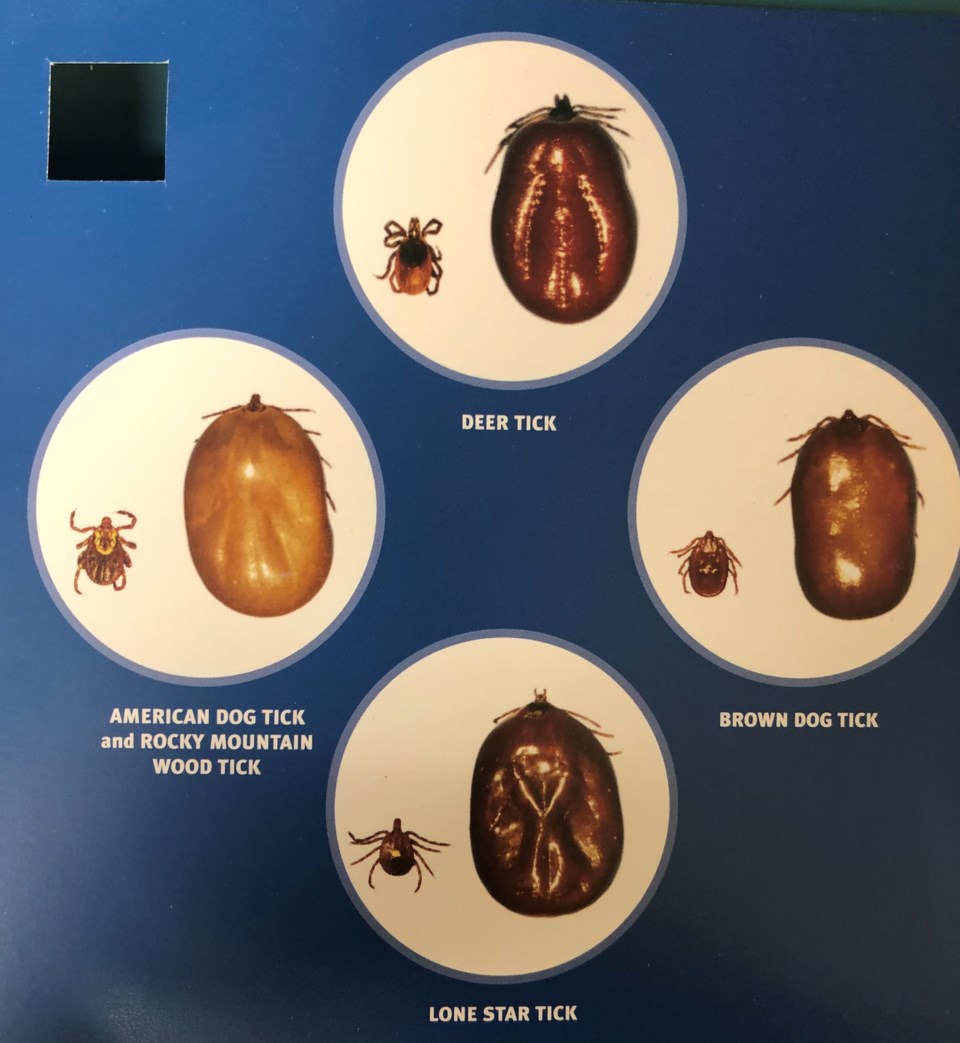Springtime means taking the dog for long walks in grass that keeps getting taller and taller.
That means ticks should now be on your watch list for wildlife. Dr. Janet Jones of the Jasper Veterinary Clinic said that the ticks found in Jasper are predominantly if not exclusively Dermacentor ticks, at least for the time being.
“They are the Rocky Mountain ticks. That's what you would expect to find here. The Ixodes … it's the deer tick, which is much more common in the East. That's the tick that carriers Lyme disease. Not all ticks carry it.”
Ixodes ticks have been confirmed in some Alberta cities over the last few years. In 2022, the Alberta government identified 192 of them, with 25 testing Lyme positive. None of them came from mountain areas, but Jones said it could happen at any time.
The clinic sent a few ticks away last year, but all were Dermacentor. Dermacentor ticks can’t transmit Lyme disease, but they can still pass on other tick-borne diseases.
Rocky Mountain Spotted Fever is the most common of those, which can present with generalized symptoms including a fever and headache. This might be followed a few days later with a rash on the wrists and ankles with possible muscle pain, abdominal pain, and vomiting and diarrhea. Worst-case scenario in the long run: hearing loss or partial amputation of an arm or a leg.
In Jones’s 35 years of experience, she has never diagnosed a case.
“Any of these diseases are less common in colder climates in general.”
Still, people are encouraged to be vigilant about themselves and their pets as they enjoy the great outdoors. This is true for dogs and for people who let their cats outdoors or take them on walks as well. That being said, Jones has never experienced a cat with a tick “outside of a laboratory setting.”
Any human with bare ankles or any animal that brushes up against tall grass can find themselves the unexpected vessel for a stowaway parasite.
There is a vaccine for Lyme disease but the team at the Jasper Veterinary Clinic are not recommending it yet. Even if Ixodes ticks aren’t yet in Jasper National Park, Jones does recommend monthly prevention and/or checking regularly for ticks.
Doing monthly prevention will kill ticks on your dog and prevent any disease including Lyme from being transmitted, she said.
“We do recommend that here just because we don't know when Lyme disease is going to show up. We know it's in Alberta. The risk is low, but hey, we have a lot of dogs that are out and about in the bush.”
The prime areas for ticks here are in areas where there are more sheep and moose.
“If there’s more sheep there, there’s more ticks there,” Jones said.
The Government of Alberta has its Submit-a-Tick program. Members of the public can submit a photo of a tick that has been found on a person, an animal or in the environment. People are also asked to save the tick in a clean, empty, plastic container with a tight-fitting lid for at least 10 days.
This version of the story has been corrected. The original version misstated Dr. Jones's recommendation about vaccinating your pets.




